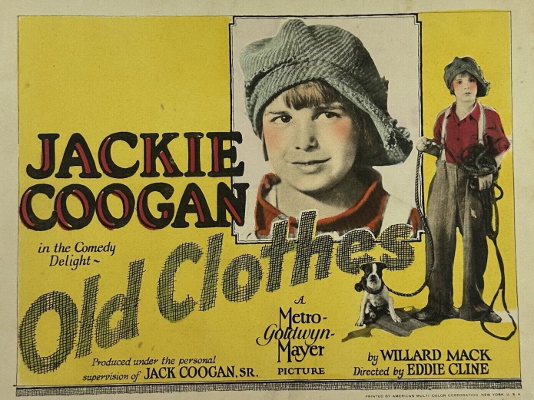 MGM
silent. 65 minutes (6 reels).
MGM
silent. 65 minutes (6 reels).
US (NYC) premiere: 11/8/25.
Not available on VHS or DVD.
Print
survival status: Print
exists (holder unknown)
Cast: Jackie Coogan, Joan Crawford (as "Mary Riley"), Max Davidson, Lillian Elliott, Alan Forrest, James Mason, Stanton Heck, Dynamite the Horse.
Credits: Story by Willard Mack. Producer: Jack Coogan, Sr. Director: Eddie Cline. Camera: Frank B. Good.
Plot Summary:
The Rag Man proved to be a popular release, so Metro-Goldwyn-Mayer quickly put together this sequel. The studio's brand new starlet Joan Crawford stars alongside young Jackie Coogan and old Max Davidson. When we last saw Tim Kelly (Coogan) and Max Ginsberg (Davidson), the ex-rag pickers had struck it rich. But the copper stock in which they have invested takes a dive and they are compelled to go back into the junk business. They take in the penniless Mary Riley (Crawford) as a roomer and she hits it off so well with them that she winds up becoming a partner in their little company. Mary falls in love with Nathan Burke (Alan Forrest), a young broker, but his mother (Lillian Elliott) opposes the match. Eventually it is revealed that Mrs. Burke came from a poor background herself, and her long-ago sweetheart was Ginsberg. After this discovery, she gives the couple her blessings. The copper stock soars in value once again, so Kelly and Ginsberg are back in the money. ~ Janiss Garza, All Movie Guide
Notes:
Old Clothes was a sequel to Coogan's earlier 1925 film, The Rag Man. Coogan and Max Davidson reprised their roles and Eddie Cline again directed.
This was Joan's first appearance with her new name, Joan Crawford.
Joan was initially hired only to teach child star Coogan the Charleston. (JC: Ultimate Star)
Jackie Coogan, Sr., insisted on a casting couch session before choosing Joan from 150 girls who wanted the part of "Mary." Joan later called him "a dirty pig." (JC: Essential Biography)
Musical numbers accompanying the film at NYC's Capitol theater in 1925: "Southern Rhapsody," overture; "A Leaf From Nature's Book," a Screen Art production: Louise Loring, soprano; "Dutch Dance," with the ballet corps; Gladys Rice and William Robyn, duet; Doris Niles, John Triesalt and ballet corps in "Bacchanale" from "Faust."














